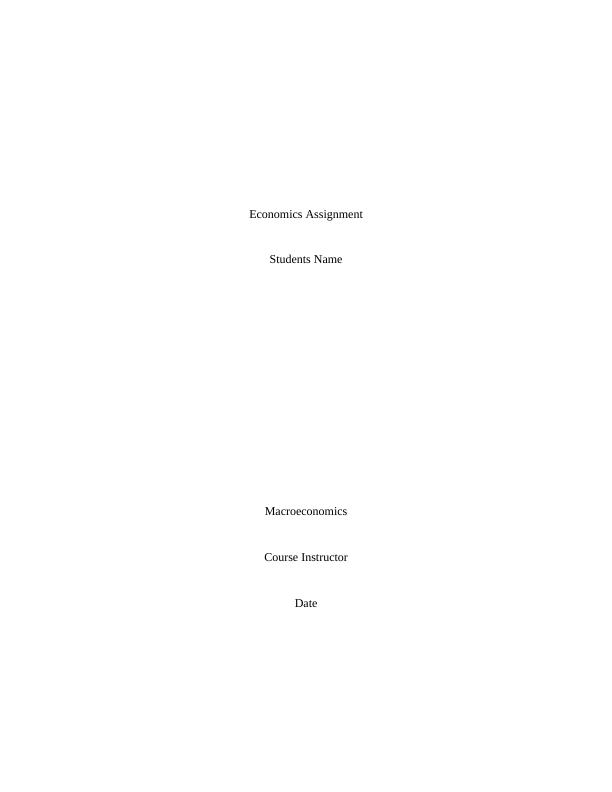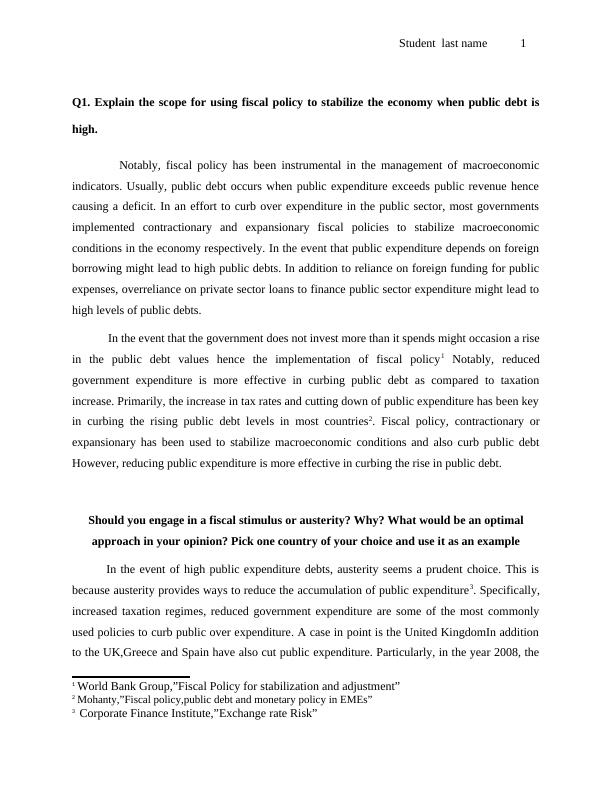Scope for Using Fiscal Policy to Stabilize the Economy with High Public Debt
Explain the scope for using fiscal policy to stabilize the economy when public debt is high and discuss whether fiscal stimulus or austerity is the optimal approach. Provide an example of a country.
9 Pages2402 Words454 Views
Added on 2023-04-21
About This Document
This document discusses the scope for using fiscal policy to stabilize the economy when public debt is high. It explains the impact of reducing government expenditure and implementing contractionary fiscal policies. It also explores the optimal approach and provides examples from countries like the United Kingdom.
Scope for Using Fiscal Policy to Stabilize the Economy with High Public Debt
Explain the scope for using fiscal policy to stabilize the economy when public debt is high and discuss whether fiscal stimulus or austerity is the optimal approach. Provide an example of a country.
Added on 2023-04-21
ShareRelated Documents
End of preview
Want to access all the pages? Upload your documents or become a member.
ECN 60204 Macroeconomics Assignment
|5
|890
|76
Understanding Fiscal Policy: Tools, Stances, and Objectives
|4
|667
|264
Article on US Economy’s Fiscal Policy
|6
|899
|54
Fiscal Policy Economic Assignment
|16
|3439
|289
Introduction to Business Environment
|18
|1288
|100
The Tax Cuts and Jobs Act (TCJA)
|5
|1003
|74



